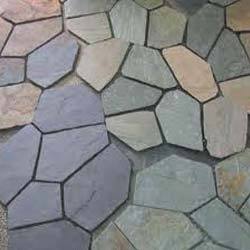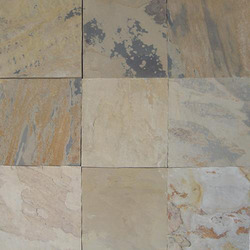Sandstone is a type of classic sedimentary rock made principally out of sand-sized mineral particles or rock fragments. Most sandstones are made out of feldspar or quartz (the two silicates) since they are the minerals that are the most resistant to the weathering processes on the surface of the Earth. Just like uncemented sand, sandstone might be of any colour because of contamination inside the minerals; however, the most widely recognized colours are yellow, red, grey, pink, brown, black, and white.
Indian Sandstone Tiles standout amongst the strongest natural stone alternatives, which gives a delightful and timeless classic look. Sandstone tile is a great tile flooring choice and for the most part, utilized in outdoor applications as it is extremely durable and has a high ability to withstand extraordinary climate conditions.
What Are The Pros Of Sandstone Flooring?
• Adds a beautiful touch to your home:
There is an unspeakable quality to natural materials that is evident in sandstone flooring. Extending in colours with a wide variety of unique colours, sandstone can cover huge stretches of tones, but it generally has a sentiment of earth and rock that can be absent in a large number of its imitators. Utilizing this beautiful rock in your home or business complex could be a great deal of eye appeal.
• Unique typical flooring
Since sandstone is created by nature itself, the hues, colours, and patterns found in any individual piece are totally extraordinary and unique. At the point when sandstone is quarried, it turns out in monster slabs, which are then prepared and cut into little pieces. That implies that each bit of tile in each sandstone floor is one irregular sample of an incredible perfect work of art of tremendous nature that extends over the world.
• Easily replaceable
Since sandstone flooring is installed in either pieces or individual tiles, the tiles can be removed and replaced with a few efforts only. You simply need to ensure that you spare a couple of tiles from the first installation with the goal that they match and coordinate the repaired floor.
• Texture
Being a rock, sandstone originates from the mountain naturally rocky. In deck tiles, this is leveled out in a procedure called “checking.” This gives you numerous choices with sandstone flooring, as this procedure can be expanded to sharpen the tiles into smooth surfaces or even polish or clean them flat and sparkling.
• Strong and Durable
Sandstone can’t be compared to granite or slate for durability; however, it is going to last for a considerable length of time if appropriately maintained and cared for.
Switch To Indian Sandstone Tiles Right Away
Sandstone Tile has substantiated itself as a solid ground flooring alternative since the ancient periods of time. Having developed for millions of years, sandstone tiles offer a unique appearance which is described by its earthy layered look. It is a standout amongst the most recognized natural stone surface materials. Sandstone tiles are solid, durable and come in an assortment of textures and tones.
If you are looking at buying Indian Sandstone Tiles, visit Elegant Natural Stones to choose from their range of sandstone tiles.











